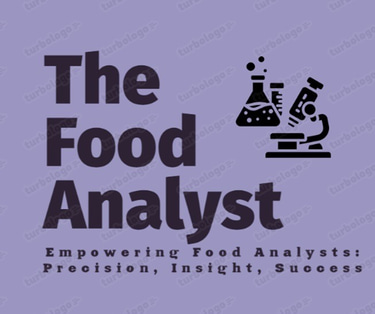"Empowering food analysts and laboratory professionals with expert insights, ISO 17025 resources, regulatory updates, industry testing requirements, training, and career opportunities for excellence in food testing."
Food Safety: Science in Action – A World Food Safety Day 7 June 2025
Food safety is a shared responsibility. From governments to consumers, each stakeholder plays a critical role in ensuring our food is safe. This table highlights the scientific contributions and duties of key players in the global food safety ecosystem.
FOOD SAFETY
6/6/20253 min read
Every year on June 7, the global community observes World Food Safety Day, a joint initiative of the World Health Organization (WHO) and the Food and Agriculture Organization (FAO) of the United Nations. This day is a call to action to prevent, detect, and manage foodborne risks that threaten human health, food security, trade, and sustainable development.
The 2025 theme, “Food Safety: Science in Action”, emphasizes the vital role science plays in keeping food safe across the supply chain—from farm to fork. Here, we explores the importance of food safety, the science that supports it, and how scientific advancements, regulations, and stakeholder collaboration are shaping a safer global food system.
Why Food Safety Matters
Unsafe food can cause over 200 diseases, ranging from diarrhea to cancers. According to WHO, an estimated 600 million people—1 in 10 worldwide—fall ill after eating contaminated food, and 420,000 die every year. Key Food Safety Statistics (WHO) are detailed below in table 1.
The impact is not limited to health; it also undermines food trade, weakens consumer confidence, and impairs national economies. Ensuring food safety is, therefore, not only a public health imperative but also an economic necessity.
The Science Behind Food Safety
Science plays a critical role in:
Risk Assessment
Food Testing and Surveillance
Traceability and Supply Chain Monitoring
Development of Food Safety Standards
Predictive Modelling and Risk Forecasting
How science play a important role:-
1. Risk Assessment and Risk Management
Risk analysis is a scientific approach used by national and international bodies to develop standards and guidelines. The Codex Alimentarius, developed by FAO and WHO, is a global reference point.
Components of Risk Analysis are deatailed in Table 2.
This framework helps ensure that decisions related to food safety are based on evidence and transparency.
2. Food Testing Technologies
Food laboratories use cutting-edge technology to detect contaminants, toxins, and adulterants. Techniques include are detailed in Table3.
Chromatography (HPLC, GC-MS) – for pesticide residues and mycotoxins
PCR and ELISA – for detecting pathogens like E. coli, Salmonella, Listeria
Spectroscopy (AAS, ICP-MS) – for heavy metals like lead and arsenic
Next-generation sequencing (NGS) – for outbreak investigations
These tools ensure timely detection and prevention of foodborne hazards.
3.Surveillance Systems and Data Collection
Surveillance systems like INFOSAN (International Food Safety Authorities Network) and national networks (e.g., FSSAI’s INFoLNet in India) track foodborne outbreaks and coordinate rapid responses.
These systems use big data analytics, geospatial tools, and AI-based models to:
Trace the source of contamination
Forecast future outbreaks
Support regulatory actions
4. Scientific Standards and Regulatory Frameworks
Countries rely on scientific committees and food authorities for setting Maximum Residue Limits (MRLs), food additive permissions, and contaminant thresholds (Table 4).
For example:
The FSSAI (Food Safety and Standards Authority of India) uses scientific panels to set standards under the Food Safety and Standards Act, 2006.
The European Food Safety Authority (EFSA) evaluates data for European Union regulations.
The US FDA and USDA conduct scientific reviews before approvals.
5. Innovation in Food Safety
Emerging technologies and innovations are transforming how we manage food safety:
Blockchain for transparent traceability
Smart sensors in packaging to detect spoilage
AI and Machine Learning for predicting risks
Rapid testing kits for field-level detection
CRISPR-based diagnostics for rapid and precise pathogen identification
These innovations reduce time, cost, and dependency on centralized labs—empowering even small businesses and producers.
Stakeholder Roles in Food Safety
Food safety is a shared responsibility. Science-based actions by stakeholders ensure effective implementation (Table 5).
Collaboration among all actors strengthens the global food safety net.
Challenges Ahead
Despite progress, several challenges persist:
Climate change affects microbial patterns and introduces new food safety risks.
Globalized food chains increase complexity and risk of contamination.
Antimicrobial resistance (AMR) is an emerging threat in animal-based food systems.
Lack of lab infrastructure in developing nations impedes timely testing.
Scientific communities must address these challenges through multidisciplinary research, investment in food safety infrastructure, and policy integration.
India’s Approach: Science-led Reforms
India has taken several initiatives:
FSSAI’s FoSTaC training modules include science-based food handler training.
Eat Right India Movement promotes safe and sustainable diets.
Rapid Alert System for Food Safety
Recent reforms like Amendments in Contaminant Regulations (2023-24) are based on continuous scientific monitoring of risk trends.
Empowering Consumers with Scientific Knowledge
The food safety ecosystem is incomplete without consumer awareness. Science helps:
Debunk food myths (e.g., preservatives, GMOs)
Educate about safe storage and cooking temperatures
Promote label reading and understanding of expiry dates
Tools like food safety apps, helplines, and public campaigns powered by scientific information can empower citizens.
Food safety is not a luxury—it is a fundamental human right and a scientific commitment. This World Food Safety Day, the theme “Food Safety: Science in Action” reminds us that science safeguards every meal we eat.
From laboratories and farms to retail counters and households, science ensures that our food is not just nourishing but also safe. Investing in scientific research, strengthening lab networks, and promoting food safety education are essential to building a healthier, more resilient food system.
As consumers, professionals, and policymakers, let us celebrate science—and support it—so we can create a food-safe world for all.
© 2025. All rights reserved. All content on this website is the intellectual property of The Food Analyst. Unauthorized use or reproduction is prohibited.
Contact Us
The Food Analyst Team
We are available in multiple locations:
Bangalore | Delhi | Mumbai
Email for editorial: contact@foodanalyst.in
For advertisement: inquiryfoodanalyst@gmail.com
